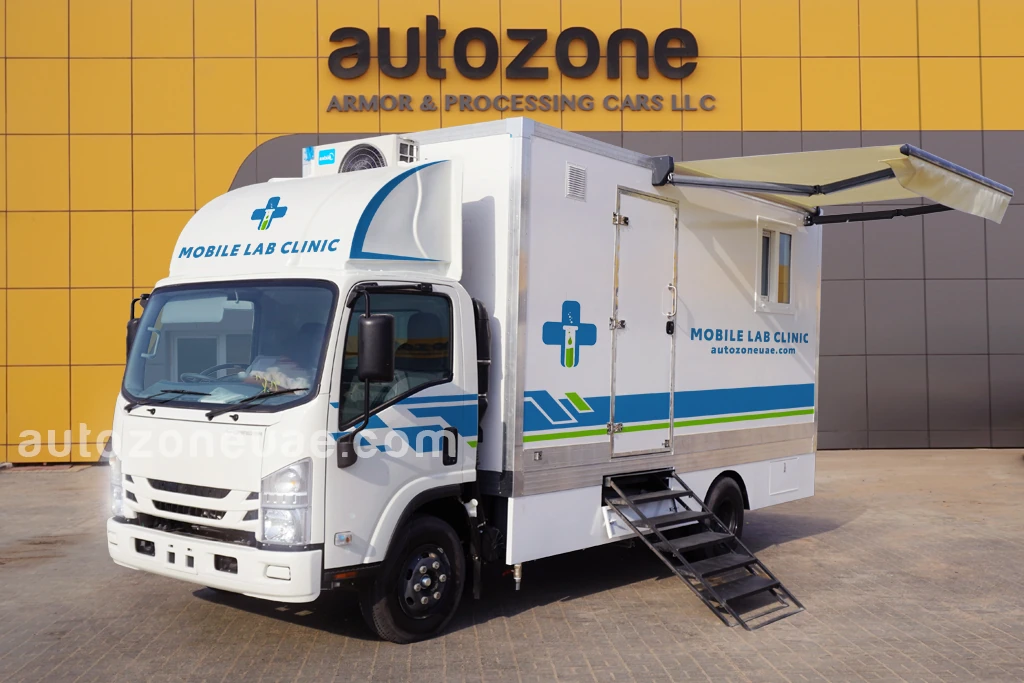Imagine a clinic on wheels, a medical facility that can travel to the heart of underserved communities, remote villages, and urban neighborhoods. This visionary approach to healthcare delivery is embodied in the concept of “Mobile Medical Units.” These rolling healthcare units, equipped with a wide range of medical services and staffed by dedicated healthcare professionals, are transforming how we think about healthcare access.
In an ever-evolving world, healthcare remains a fundamental need. Yet, for many individuals and communities, accessing quality medical care can be a formidable challenge. The barriers to healthcare access, whether due to geographical remoteness, economic constraints, or limited mobility, persist as significant hurdles to well-being. However, in recent years, an innovative solution has quietly made waves in the healthcare landscape, promising to bridge the divide and bring healthcare within reach of all, regardless of where they live or their economic status.
In this blog, we will talk about the journey of Mobile Medical Units, shedding light on their profound benefits and positive impact on individuals and communities. From improved accessibility to cost-effective care, from preventive services to community engagement, the advantages of these units are far-reaching and transformative. Join us as we delve deeper into the realm of healthcare innovation and discover how Mobile Medical Units are revolutionizing the way we access care, making healthcare accessible anytime, anywhere.
What Are Mobile Medical Units?
Mobile Medical Units, often called “healthcare on wheels” or “mobile health units,” are innovative healthcare facilities housed within specially designed vehicles. These vehicles are equipped to deliver a wide array of medical services directly to individuals and communities, irrespective of their geographical location or access to traditional healthcare facilities.
How They Operate:
Mobile medical units are operated by healthcare professionals dedicated to bringing medical care to those most in need. These units are typically staffed with physicians, nurses, nurse practitioners, and other healthcare providers, depending on the specific services offered. They are equipped with medical equipment, diagnostic tools, and treatment facilities, making them capable of providing various healthcare services, from essential check-ups to more specialized care.
Flexibility and Mobility:
One of the defining characteristics of mobile medical units is their mobility. Unlike traditional healthcare facilities, which are fixed in one location, these units can travel to where they are needed most. They can reach remote rural areas, urban neighborhoods with limited access to healthcare, disaster-stricken regions, and workplaces. This flexibility ensures that individuals who may otherwise face barriers to healthcare access can receive vital medical attention.
Variety of Healthcare Services:
Mobile medical units are versatile in the healthcare services they can provide. Some standard services offered include:
Primary Care: General check-ups, screenings, and treatment for common illnesses.
Preventive Care: Vaccinations, health education, and wellness programs.
Dental Care: Basic dental check-ups, cleanings, and minor dental procedures.
Vision Care: Eye exams, prescription eyewear, and vision screenings.
Mental Health Services: Counseling and support for mental health issues.
Chronic Disease Management: Ongoing care for conditions like diabetes and hypertension.
Emergency Care: Immediate medical attention for injuries and acute medical issues.
Community Outreach: Health education and awareness programs to promote overall well-being.
The adaptability of mobile medical units allows them to tailor their services to the specific needs of the communities they serve. Whether providing essential vaccinations to children, conducting diabetes screenings for adults, or offering dental care to underserved populations, these units play a pivotal role in ensuring that healthcare is accessible to all.
In the following sections, we will delve deeper into the benefits of mobile medical units, exploring how they improve accessibility, provide convenient care, and offer cost-effective healthcare solutions.
Convenience for Patients:
Mobile medical units offer unparalleled convenience to patients seeking healthcare services. Here’s how they enhance comfort:
Reduced Waiting Times:
Mobile units prioritize efficiency, minimizing waiting periods. Patients experience shorter wait times, ensuring they receive timely care without extended delays common in conventional healthcare facilities.
Highlight the Benefits for Individuals with Mobility Issues:
Enhanced Accessibility:
Equipped with ramps and accessibility features, mobile units are easy to navigate for individuals with mobility challenges, ensuring inclusivity in healthcare.
Comfort:
Patients with mobility issues can receive care in familiar surroundings, reducing anxiety associated with medical visits and contributing to better overall well-being.
Inclusive Care:
Mobile units prioritize inclusivity, ensuring individuals with diverse needs and abilities can access essential healthcare services.
These convenience aspects make mobile medical units a vital resource in improving healthcare accessibility for all.
Cost-Effective Healthcare:
Mobile medical units provide cost-effective care in several ways:
Preventive Focus:
Furthermore, mobile units often prioritize preventive care, which can lead to substantial long-term cost savings. By identifying and addressing health issues early on, mobile units help reduce the financial burden of treating more severe and costly medical conditions.
Challenges and Future Outlook of Mobile Medical Units:
While mobile medical units offer numerous benefits, it’s essential to acknowledge potential challenges and limitations:
Resource Constraints:
Maintaining mobile units, acquiring medical equipment, and staffing them can pose resource challenges, especially for non-profit or community-driven initiatives.
Sustainability:
Sustainability can concern mobile units, as they often rely on grants, donations, or community support. Ensuring their continued presence may require careful financial planning.
Regulatory Compliance:
Mobile units must adhere to healthcare regulations and licensing requirements, which can vary by location. Navigating these regulations can sometimes be complex.
Innovations in Mobile Healthcare:
Despite these challenges, the future of mobile healthcare holds promise, driven by advancements and innovations:
Telemedicine Integration:
Mobile units are increasingly incorporating telemedicine technology, allowing for remote consultations with specialists and expanding the range of services they can offer.
Data Analytics:
Mobile units use data analytics to identify healthcare trends and prioritize services more effectively, ensuring that they address the specific needs of their communities.
Mobile Diagnostic Tools:
Innovations in portable diagnostic tools are enhancing the capabilities of mobile units, enabling them to provide more advanced care on-site.
Collaborative Models:
Mobile units are forming partnerships with local healthcare systems, universities, and NGOs to leverage resources, expand services, and ensure long-term sustainability.
Healthcare Access Apps:
Some mobile healthcare initiatives are developing smartphone apps to help individuals locate and schedule appointments with mobile units more easily.
Moreover, in the face of challenges, mobile healthcare is evolving and adapting to meet the needs of communities better. These innovations hold the potential to enhance further the impact of mobile medical units in the future.
Conclusion
In conclusion, mobile medical units are more than just vehicles; they are transformative agents of accessible healthcare. They break down geographical barriers, reduce waiting times, and offer a wide range of services, all while ensuring inclusivity for individuals with mobility issues. These units not only provide cost-effective care but also engage communities in health education, promoting overall well-being.

 AR
AR FR
FR







